How to Keep Your SUV Safe
SUVs are built to survive punishing roads, reckless drivers, and family road trips. Therefore, you should do everything you can to keep your SUV safe. That way it can withstand the biggest challenge: time itself! Below is a guide to keeping your sport utility vehicle as safe as possible, without locking it in your garage for the rest of eternity.
Be wary of road conditions
You don’t want to be caught off guard when you encounter strange and unusual road conditions. Whether it’s ice on a bridge or construction detours, always be cautious of the roads you drive on. Also, never underestimate the relentless, destructive power of a single pot hole.
Check your brakes
Brakes are – arguably – one of the most important features of an SUV. They can prevent you from driving through your garage or plunging off the side of a cliff. Routinely check your brakes and replace them if they’re bad. Knowing your SUV is safe will give your conscious a much-needed break.
Know the weather forecast
You don’t need to be a meteorologist to drive your SUV. But, it couldn’t hurt! Checking the forecast for storms, snow, acid rain, or fog, before you leave your home can mentally prepare you to drive in extreme weather conditions. The last thing you want is to be caught outside in acid rain without an umbrella!
Keep a spare tire
Always keep a spare tire in your SUV. In the instance you blow out a tire on the road, you will always have a back-up to keep you from being stranded. Also, something you should add to your repertoire: learn how to change a tire!
Lock your SUV
Locking your SUV is a quick and simple way to ensure its safety when parked. Just like your front door, keeping it locked-up will keep people locked-out. It’s hard to steal an SUV from the outside.
Use a turn signal
You may know this from acing your online traffic school course, but using turn signals is the best means of communication with fellow drivers. However, turn signals often are the car’s most underutilized feature. They’re the most important way two drivers can communicate – outside of giving each other the middle finger.
Don’t Rage
While driving, never let yourself fall into a fury that makes Mad Max jealous. Staying cool behind the wheel is just as important to your SUV’s safety as it is to other’s safety. It could feel cathartic to rear-end the person who just cut you off, but the ones that suffer will be your SUV and your driving record.
Know where you’re going
Always know where you’re going. You can drive the same route to work every day or map your road trip in advance with a GPS. When you know where you’re going, you will have a better idea of what to expect. This is also helpful advice for living your life.
Headlights and brake lights are important
Double check those headlights and brake lights with a friend before long road trips. Broken lights make it difficult for other drivers to see you. More importantly, it’s a reason to get pulled over by the police. Driving without lights isn’t a bright decision.
Keep an emergency kit
First aid kit, flashlight, road flares, blanket, and a gallon of water is a recommendation of what to include in your emergency kit. Being prepared for the worst is always the smart decision. Accidents are unpredictable and can happen anytime and anywhere, but that doesn’t mean you can’t be prepared for them.
What to Do When Your Car Gets Trapped
Loving your car is one thing but being buried alive as it sinks in quicksand is another. When you’re traveling on tough terrain, you can run the risk of getting your car stuck in anything. When your car gets trapped in snow, mud, or a bayou it can cause serious damage to your vehicle and your self-esteem.
We’ve compiled a guide to aide you whenever you’re stuck in a sticky – or snowy – situation. Following the guide below, will help you escape any entrapment – except for quicksand. You’ll need a whip and a low hanging branch to get yourself out of quicksand.
Remain Calm
A trapped car can launch you into panic mode. Even more of a panic than trying to pass your online traffic school course. Keeping calm helps you make smart, rational decisions without the frenzy of being in panic mode. You want to stay cool, like the snow you might be trapped in.
Keep the Tires Straight
When you’re stuck in mud or snow, you can make your escape easier by keeping your tires straight. Twisting your wheels back and forth will cause your car to sink deeper, which will make it a challenge to become unstuck. The more you move, the worst it gets. Yes, we’re getting all our advice from watching movies about quicksand.
Clear the Exhaust Pipe of Debris
By clearing the exhaust pipe of debris, you can prevent engine fumes from filling up your car. We don’t need to tell you the repercussion of a car full of exhaust. But, it’s your death. The repercussion is your death, because there is too much carbon monoxide.
Light Your Car on Fire
If your car is trapped, one quick way to get it unstuck is lighting it on fire. The billowing smoke from your car’s raging fire should alert nearby emergency personnel, which will lead them to aid you. When they see the scorched remains of your car, they will assist with calling a tow-truck. It’s the perfect plan.
Life Hack: Use Your Floor Mats as Leverage
One quick and simple life hack tool, to help you escape the perils of being trapped in mud or snow, are the floor mats in your car. When your wheels are spinning, but you’re not going anywhere, you need more friction. Placing a floor mat under your wheels can supply enough friction to leave your trap.
Accelerate Slowly
Accelerating slowly helps you gain some much-needed traction. Your first reaction to becoming trapped is to peel your way out. However, that’s one of the worst things you can do in this situation. Calmly place your foot on the gas and let your car build up traction to escape. Bonus points if you get your friend to push the car while you do it.
Get a Chain and Big Truck
If you got a friend with a big truck, a chain, and, potentially, a red neck, then give them a call. Getting help from someone else is extremely beneficial, such as a tow truck, an emergency personnel, or your friend who just installed semi-truck wheels on their pickup. We’re not yanking your chain, but your buddy might, because they want to help you get unstuck.
Be Prepared for the Worst
Always be prepared for the worst situation possible. Keep snacks, bottled water, first aid kits, and blankets in your car in case you are ever trapped and can’t get out. Whether you’re caught in an avalanche, stuck in a bayou, or slowly sinking in a quicksand, having a preparation kit can help make the situation better. You don’t want to be stranded in a quicksand without a granola bar!
How Much Do You Save with Costco Travel?
Let’s face it; we are a scam-paranoid bunch of consumers. And rightly, so. This is especially true since scammers are mastering the art of appearing like legitimate companies offering legitimate deals. Those buying a car have to walk a tightrope through the entire purchasing process, so as not to drive off the lot feeling emotionally nauseous. Such is the case with the now well-known Costco Travel Auto Program.
While it has received national acclaim for being able to save you money while buying a car, many a consumer has added it to their blacklist. Let’s take a closer look at the Costco Travel Auto Program so that you can determine if it’s right for you.
Costco’s Mega Auto Savings Claims
Visit the Costco Travel website, and you’ll see that they make some bold claims on how their program can work in your favor. Up front, here’s what they offer:
• Low, prearranged Costco member pricing
• All available national manufacturer incentives
• More than 3,000 hand-selected dealerships nationwide
• Trained Authorized Dealer Contacts to serve you
• Smooth, seamless buying experience
On the outset, it sounds like a great deal. After all, who wouldn’t want low member pricing, incentives, instant access to dealerships, trained experts, and the most accessible buying experience ever? You sign up for the program. You get to choose the vehicle make and model you want. Costco refers you to a local dealer and then you experience a no-hassle purchase with all the bells and whistles.
Some Red Flags with the Savings Plan
Do some digging around on the web, however, and you’re likely to find a plethora of problems that customers have reported in either trying to understand the program or apply to a recent purchase. Some of the reports include the following:
• The program doesn’t keep car sales associates from pressuring you into buying a car.
• Costco’s price and the dealership bottom line price often does not line up.
• The customer service is horrid, as customers complain of no-return phone calls and emails.
• Costco does not control the underlying sticker price on the car.
It seems that the bottom line on the bottom line is that there is a chasm far and wide between how much money Costco can save you and how much you can talk the car salesman down to before you sign the papers.
How to Effectively and Accurately Determine Savings with Costco
So now we’re back to the original question: how much money can you save with Costco? As the adage goes, “There’s only one way to find out.”
Here’s what you do:
First, call Costco. Don’t email the company or send a message on their contact page. Pick up the phone and talk to a warm body. Tell the Trained Authorized Dealer what you are looking for and then ask him or her how much money the Auto Savings Program will save you. Do not hang up until you get an actual numerical estimate. Then call your local dealership and ask the salesman the same thing.
Careful, the salesperson’s job is to convince you to visit the dealership. But stand your ground and be firm. Do not hang up until the person on the other end of the line gives you a quote. From there you can make an informed decision if Costco’s savings plan is worth it. The good news is that you can save anywhere from $2,000-$5,000 on a car by using the program.
Is the Savings Plan a scam? Probably not. Will it save you money? Probably. Should you do your homework first before committing? Absolutely!
Sign Up for Florida Online Traffic School
If you are looking for an online traffic school, then contact Improv today. We provide a wide range of courses and resources for traffic education and testing. To find out more, contact us at 800-660-8908, or you can chat live with one of our testing experts!
CA Highways and Freeways: What to Expect
Highways and Freeways are the backbone of the United States’ infrastructure. Between the toll roads and the rest stops you find the American dream in the form of 3-lane paved concrete road. When you’re traveling in California, it’s nearly impossible to get around without cruising the countryside on one of these famous interstate CA highways.
So, what exactly should you expect during your cross-state road trip?
You may find your share of potholes, detours, crazed mountain folk, and road construction when you’re driving up the PCH or navigating through the desert. So, we’re giving you a road map to what to expect from California’s highways and freeways.
I-5
Interstate-5 is a heavily used north to south highway that stretches across the entire state of California. This freeway directly and indirectly connects every major metropolitan city in the Golden State. Despite being filled with traffic when passing around cities, I-5 is known for its scenic views of central California. Just be sure to watch out for crazed mountain folk! Just kidding – but we’re sure they’re out there.
I-8
Running along Mexico’s border, you’ll see your fair share of sand and dirt. But, that doesn’t stop this interstate from being a breathtaking experience! This freeway is often used for travelers coming or going from San Diego.
On this route, you can pass through the historic town of Yuma on your way to Arizona. Although, the only historical fact about Yuma I know is seeing the film 3:10 to Yuma. You will also pass by the Instagram worthy sand dunes and beautiful sunsets through this desert filled freeway.
I-10
If you’re beach bound coming from Arizona, I-10 is the route for you. You can stay on this highway all the way from Phoenix to Santa Monica. You’ll be so close to the coast, you could practically drive straight onto the beach. Most of this trip is through the desert between the two bordering states, so you can expect flat lands, dried up cacti, and bumpy roads.
If you’re making the drive at night, you can pull over on a side road and look up at the milky way. There’s hardly ever cloud coverage, so you can have a perfect view of the galaxy at night. You don’t need fancy scenery when you have the stars!
I-80
Also known as the Dwight D. Eisenhower highway, I-80’s stretch will get you from San Francisco across the country to New Jersey. You can gain access to this historic highway by entering through the bay area. This concrete path will take you through the countryside of Northern California and well-known landmarks, such as The Central Valley and the Sierra Nevada.
But, be on the lookout for speed limit signs! I-80 has a reduced speed of 65 MPH. Unlike the usual 70 MPH throughout rural California.
“The 101” or “101”
Arguably the most popular highway in all of California. The 101 is among the longest highways in the state. It’ll take you from Oregon to Los Angeles. Along this route, you can expect to find historic landmarks, California staples, the serene countryside beauty, tourist destinations, highway patrol, and even the Golden Gate Bridge.
If you had to sum up all of California into a stretch of road, it’ll be the 101. You can also see the Pacific Ocean along most of this drive, because it runs near the coast.
When you’re cruising through the countryside on a highway or freeway, remember not to speed. We know the temptation can be there. We’ve been down the PCH during sunset. If you ARE slapped with a speeding ticket, remember to enroll in an online traffic school California. Doing so can wipe away the speeding ticket’s points from your driving record, you won’t have to suffer from increased insurance rates, and you can prove to yourself that you are a safe driver. Safe enough for some insurance rate deductions!
Officer Gives Heartwarming Surprise
If you have been wondering where all the humanity in our world went, all it takes is a bit of digging to find the good people. They are everywhere and there was recently a story that popped up from the St. Louis area. A man was driving his 5-year-old niece home from her chemo appointment when he was pulled over by a officer for a routine traffic stop. On the surface, this may not sound like a good story, but the situation takes a positive turn.
Matthew Manley was the man who was pulled over and when he saw the police car, he immediately knew what he had done wrong. He had been delaying the transfer of his new license plates for a bit of time and he knew that this would result in getting a citation, which is something you learn in a MO Driver Improvement course. Manley had been driving his niece back and forth to chemotherapy for cancer treatment every day which did not make the day any easier.
After the officer cited him a ticket for his license plates, he then went back to the police car and started rummaging through his trunk. Manley did not know what to think and even sent a text to his wife Dana because he was a bit scared! He was timid thinking about what was going to happen next. Manley was nervous until the police officer, Shawn Birdsong, returned to his vehicle and had a pink backpack in his hands. He gave the bag to Manley and said that it was for his niece and he hoped that it would help brighten her spirits.
Inside the bag was a note from the officer Shawn Birdsong to Manley’s niece that said he hoped she felt better soon. There were also some clothes, toys, and art supplies contained inside the bag. Manley was so moved by the act that he not only thanked the officer for his kindness, but he also shared the story on his Facebook page and thanked the officer again there. This was such a heartwarming act that meant so much to the Manley family and the little girl.
The Facebook post eventually reached Birdsong again and he then called the Manley family to thank them. Since then, he has called back to check on the little girl 3 or 4 times. He has gone above and beyond his role by showing this compassion for the little girl. He had the backpack in his truck at the time because he was participating in Project Backpack St. Louis which puts together backpacks with comfort items and necessities for children. He saw it as the perfect opportunity to help make the day of this little girl a bit better, especially since she was going through such a trying and difficult time.
If you are looking to stay out of trouble while driving, consider taking a course through the best traffic school online and remember to show compassion to others all season long.
Math Calculates that You’re the Reason Behind Traffic Jams
There’s nothing worse than a traffic jam, especially one that you must sit in day after day. And while some traffic jams are justified by construction or some type of vehicular accident, there are many that aren’t. You look around to see what has caused the delay, but for the life of you, nothing out of the ordinary seems to be taking place. The only reasonable answer is that the traffic gods have, once again, conspired to make you late.
What or Who Creates a Traffic Jam?
If the traffic gods aren’t against you, why is it that everyone is bumper to bumper? Why is traffic moving so slow if there is not even any construction or accident? According to a study published in IEEE Transactions on Intelligent Transportations Systems, there is a mathematical model that demonstrates the problem very well could be the fact that you’re not keeping the right distance from the car behind you. Wait? You’re probably asking yourself, did I just read that right? Not keeping the right distance from the car behind me? How is that even possible?
So, what can you do if you don’t have control over the cars behind you, yet you are supposed to be maintaining an appropriate distance from them? Doesn’t this sound like a recipe for disaster? Truth is, you need to implement your senses to better drive an appropriate distance from everyone on the road and avoid having to go ca traffic school for a traffic violation. Math has shown that when people are able to keep an equal distance between the cars ahead of them and behind them, this equal space helps maintain a more orderly fashion on the highway. In fact, traffic moves almost twice as quickly when equal space between all cars is maintained.
Understanding Emergent Property
Emergent property is the formation of something incredibly complex by smaller entities. Take for example a murmuration; this is when starlings, thousands upon thousands of them, come together and form a shifting blob. The outcome is incredible and beautiful, but most people are left asking themselves, how do the birds move so quickly without flying into one another?
Another example is when you see bats in movies fly out a small hole in a cave. Millions of them can exit a small hole in a small amount of time without ever flying into one another. Berthold Horn, a famous author, states, “the assumption is that they’re actually aware of bats all around them, not just in front, and that’s why hundreds of thousands of them can come out of a very narrow cave and not collide.” It is important to note, however, that bats have the luxury of using both echolocation and their sight to achieve their emergent property capabilities. Therefore, it is pertinent for us to start using everything at our disposal to improve traffic flow on the highway, with some of the most notable methods being to take advantage of today’s advanced technology.
Without the use of technology, a human doesn’t have the capability to calculate distances both in front and behind them simultaneously. Control systems that can perform these calculations are essential to avoiding an emergent property catastrophe. Have you ever heard of adaptive cruise control? This feature helps follow cars ahead of you at a certain distance, and when side and back sensors are added, this can help maintain equidistance. And while this seems like a viable solution, it must be realized that for this to work well, most cars on the road would need to be taking advantage of this equidistance technology.
Is equidistance technology the next big thing? Find a traffic school near me to learn more.
California Fires 2017: What Travelers Need to Know
The Ventura fire in California is causing massive devastation for residents and travelers. Hundreds of thousands of people are having to evacuate the area and flee their homes, and unfortunately, for now, there is no relief in sight.
On Thursday morning, December 7, 2017, the weather included strong winds combined with dry conditions and low humidity, making the problem completely exacerbated; these conditions create a prime environment for the fire to grow and spread. And to make things even worse, weather conditions for the week are predicting winds up to 80 mph, which will only spread the fire even more.
The Ventura fire, formally known as the Thomas Fire, has already grown to encompass more than 140 square miles, causing nearly 300 schools in the LA area to close their doors for several days. Even residents who are several miles away from fires have been encouraged to stay indoors, and when traveling outdoors, they have been instructed to wear masks to fight the bad air quality.
Many travelers in the area, both locals and visitors, including those who are in town for ca traffic school, are not sure what to expect out of the Thomas Fire, especially regarding LAX flight schedules. It is important to note, though, that US 101, which is California’s longest highway, has been closed from Ventura to Carpinteria because of the fires. Regarding LAX, the airport, as of now (December 9, 2017), is completely operational. Still, because of the partial closure of US 101, traffic is horrible. And in addition to the partial closure of US 101, the 405 Freeway has been closed as well, further aggravating traffic conditions. For those who are flying in and out of LAX, it is recommended to allow plenty of time for traveling to and from the airport.
Also, for those who are traveling by the FlyAway Shuttle to the airport, delays have been reported. As of Thursday, December 7th, 2017, the delays were being reported as normalized, but that could change at any time. If you are traveling by the FlyAway Shuttle, make sure to check for any possible delays and come up with an alternate travel option in case the fires do cause shuttle delays.
What to Expect at LAX: Arrival and Departure Delays?
As of December 9, 2017, there are minimal flight delays regarding arrivals and departures at LAX, and so far, none of these delays have been directly caused by the nearby fires. Another airport located near the fires, the Burbank Airport, has not reported any delays either because of the fires. It is recommended, however, that anyone traveling out of LAX or Burbank Airport to check their flight status. If the Thomas Fire was to worsen and spread, then there is a high likelihood that LAX and the Burbank Airport will be affected as well as any other airports that are nearby. If you happen to be traveling by Southwest or JetBlue and want to change your travel plans because of the fire, you can do so with your fare differences and change fees being waived by the airlines.
Make sure you to check local news to stay up-to-date with the latest information on the Thomas Fire in Ventura County.
Are Traffic Light Cameras Legal in Florida?
Want a straightforward way to tell if red light cameras are working in Florida? Just drive through any intersection and check your mailbox in a few weeks. No ticket? No problem.
The BEST way, of course, is to obey all traffic laws and focus on safely stopping, which is often the stated reason why Florida cameras were even installed.
Unfortunately, the Sunshine State has created confusion about its camera programs. While some municipalities appreciate the revenue Florida traffic cameras have generated, some citizens don’t like the idea of an unmanned machine watching them in the privacy of their car, and then issuing a huge fine without giving them a chance to legally defend themselves.
The topic is discussed at city, county and state levels, and the Florida Legislature has gone back and forth over the lengthy lists of pros and cons. Several lawsuits are pending and the Florida Supreme Court has also offered little in the way of firm rulings and guidance, but plans to tackle the issue in early 2018.
In the meantime, this has created a patchwork of areas and communities where there are plenty of active cameras (currently about 60); areas where there are cameras but they aren’t in use; and areas where cameras have been removed and locally banned.
Because each municipality controls its cameras and policies, it also can create all sorts of possible fines. Essentially, as one traffic magistrate pointed out, enforcement and size of the fine and penalties vary widely. Even the Miami Dade Clerk can dismiss an infraction if someone signs up for a defensive driving course.
City/County Confusion

The Miami Dade County area is a good example of the uncertainty of Florida traffic cams. In 2016, county commissioners approved a ban on the cameras in unincorporated areas, which includes the greater Miami area. It reversed a 2011 ruling allowing Miami traffic cameras, but they were never powered on. But 16 cities in the county now permit these.
Surrounding counties also has offering conflicting policies. In summer 2017, the cities of Pembroke Pines and Boynton Beach voted to reactivate cameras and begin ticketing drivers. Boynton Beach is the only one of 39 municipalities in Palm Beach County to activate these cameras.
Policies in other communities also vary. In 2016, Tampa traffic cameras were extended for two years, while the Jacksonville City Council voted to end its program in summer 2017. Orlando has allowed them and then banned them. St. Petersburg has banned theirs.
Bigger Fights

The Florida House approved a statewide ban on red light cameras in the 2017 session by 2021, but the bill died in the Senate. Lawmakers had mixed things to say about cameras. They lowered the number of pedestrian accidents but increased the number of rear-end accidents inside intersections, often triggered when people brake suddenly. Supporters of the cameras also say local cities should determine their own policies.
A similar bill is expected to be introduced for the 2018 session.
At the same time, the state’s judicial body is considering the constitutionality of receiving red light tickets. The Florida Supreme Court plans to hear arguments in February 2018.
This case revolves around how the City of Aventura uses cameras, while neighboring city Hollywood, doesn’t. The camera contractor is accused of reviewing footage to find possible violations, and then sending out tickets, which by law should be a task for law enforcement.
Until the matter is settled, Florida drivers, especially those enrolled in online traffic school and learning to drive, should be aware of red light ticket cameras still in operation through the state.
Am I Eligible for Traffic School?
If you have received a traffic citation, you may be eligible to take traffic school or a defensive driving course. Taking one of these can help reduce the number of points on your license. This can help to lower your insurance rates, which may increase due to the ticket, and prevent your license from being suspended if you receive too many tickets. Each state has different requirements as to when and if you can participate in traffic school or a defensive driving course. Here is some information about traffic school eligibility in Arizona, California, Florida, Kentucky and New York.
Arizona
In Arizona, you can participate in a defensive driving course as long as you have not participated for a ticket issued in the past 12 months or sooner. The date is based on the issuance of the ticket for which you are taking the course, not the date in which you took the course. Also, if the ticket was issued because you were involved in a serious crash or fatal accident, you may not be eligible.
California
In California, you can complete traffic school once every 18 months for traffic infractions. This reduces one violation. If you were cited for multiple violations, only one can be removed with traffic school. Also, you must have been in a non-commercial vehicle to be eligible and your driver’s license must be valid. If you were cited for not having a valid license, in addition to other traffic infractions, you are not eligible for traffic school in the state of California.
Florida
In Florida, you can elect to attend traffic school if you were cited for a non-criminal moving violation using a regular driver’s license. If you hold a commercial driver’s license, you cannot attend this type of program. In Florida, you can attend traffic school or driver improvement courses once every 12 months to eliminate points caused by a ticket. However, you can only attend five times during your lifetime. As such, you must use your limited number of courses wisely. If you have participated in traffic school in other states prior to moving to Florida, it does not count against the cap. The five times only applies to Florida and your Florida driver’s license.
New York
In New York, you can participate in a Point & Insurance Reduction Program or (PIRP) to reduce points on your driving record and decrease your insurance. You can participate in PIRP once every three years. However, the program only reduces up to four points from your driving record that were present within the 18 months prior to you taking the course. But participating once every three years earns you a 10 percent reduction in your insurance premiums.
Kentucky
In Kentucky, you can participate in traffic school once every 12 months for minor traffic infractions. Major traffic infractions or criminal traffic infractions are not eligible. This removes one infraction from your driving record. To be eligible, you must not be under license suspension and must have a valid license. Non-licensed and out of state drivers are not eligible to participate in driving school in Kentucky.
Most schools offer traffic school or defensive driving courses to help you reduce minor traffic tickets from your driving record. However, the requirements for this vary from state to state. If you have received a traffic ticket, check with your state to find out what programs you may qualify for to help get the ticket removed from your record. This can help keep your insurance rates as low as possible.
How Long Will It Take You to Get to Work?
Some people absolutely dread the morning and evening commutes to and from work, school and elsewhere. Others look forward to it as an escape from the workday grind and the responsibilities of the home. Everyone can agree on one thing: A commute that takes half an hour or longer certainly tests the nerves. This is especially true for those who reside in or near busy metropolitan centers.
Location, Location, Location!
The length of time it takes you to get to work largely hinges on the amount of traffic along your route. If you reside and work in a rural or remote suburban area, you probably do not mind your commute. Roads in rural and some suburban areas tend to have comparably light traffic. Those who reside in populous suburbs or dense cities typically have longer and more stressful commutes.
The bottom line is the more vehicles that traverse your route to and from work, the longer your commute will be. Traffic has significantly spiked in major cities across the past couple of decades as population growth and urban sprawl have spiked. If big city driving gets the best of you and you end up with a speeding ticket, don’t panic. Attend a defensive driving course and it will help calm your nerves while behind the wheel, keep your driver’s license in good standing and prevent your automobile insurance rates from soaring.
Timing is Everything
The time your work day begins plays a major part in the length and quality of your commute. In an ideal world, you would be able to set your own hours, showing up and leaving work whenever you like. Unfortunately, most people must be at work by 9 AM and leave around 5 PM. These are the worst times to be on the road as most workers abide by the same 9 to 5 schedule as just about everyone else.
You can get a head start on the traffic crowd by starting the day a bit early or leaving work after the rush our subsides. Those who show up to work between 6 and 8 in the morning don’t have to battle as nearly as much traffic as the 9 to 5 worker. It also helps to head home around 6:30 PM or later. If you don’t want to work a 10-hour work day, consider joining a gym near your office or head to a nearby park for some exercise. Get your daily exercise out of the week in the hour or two after work and you will face significantly less traffic during your ride home.
Other Key Factors to Consider
Experienced drivers know each daily commute poses unique challenges. There are all sorts of dynamics in play when it comes to the morning and evening commute. Keep your radio tuned to a local news station so you are aware of accidents or other traffic disruptions along your travel route. It also helps to listen to the local news updates on radio or TV while going through your morning routine. If possible, listen to these updates at work or take a moment to check Google Maps and other real-time traffic update websites before leaving for the day.
Don’t forget about weather! Anything from rain to winds, snow, hail and other inclement conditions can affect your traffic commute. The savviest drivers check the weather forecast a couple times per day. It really does help to have an idea as to what sort of conditions you will face when you get behind the wheel and head to work or back home for the evening. Even a light rain has the potential to make the roads slippery and result in nasty accidents that case mile-long traffic congestion.
Just How Bad is L.A. Traffic?
“It’s appalling…an endless riddle.”
“Adding any number of lanes couldn’t make it better.”
“Countless reports claim that Los Angeles has the worst traffic in the country, and they’re all true.”
If you recognize these quotes, then you’ve experienced L.A. traffic. These quotes are just a small sampling of what is said about driving in the legendary city. Every major publication in the U.S. and abroad has had something to say about L.A. traffic. Forbes, Money, Travel, LA Times, Huffington Post, New York Times, and Trip Advisor – they’ve all chipped in their two cents.
But just how bad is the traffic in Los Angeles? Consider the following facts:
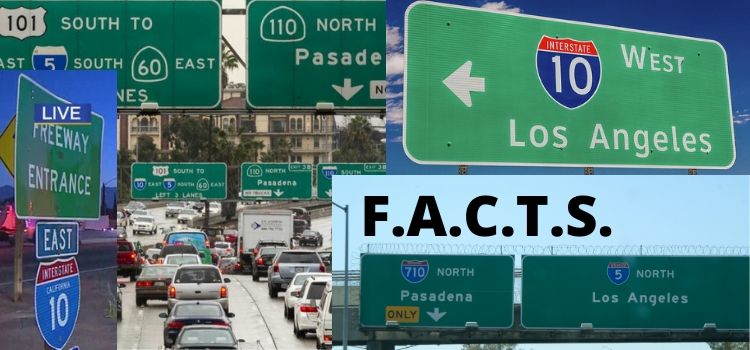
• Residents of Los Angeles spend an average of 81-100 hours idling on freeways annually.
• On any given morning, drivers will creep at an average of 17mph during the 8am “rush” hour.
• Los Angeles is one of few cities in the world where automated vehicles (which are set to be released on a mass scale in the next 3 years), are going to make things worse, not better.
• L.A. has four of the top ten world most congested highways within the city limits:
1. 101 Freeway between Topanga Canyon Blvd and Vignes St.
2. 5 Freeway between Highway 133 in Orange County & Olympic Blvd
3. 10 Freeway between Santa Monica and Alameda St.
4. 101 Freeway between the 60 Freeway & Haskell Ave.
• On any given day at 8am or 5pm, drivers will have to wait an average of 51 minutes in delayed traffic just to go 10-20 miles.
• 80% of traffic tickets given on CA freeways were resolved by taking CA traffic school.
• Congestion costs the average L.A. driver just over $2400.00 per year. That equals 9.7 billion dollars city-wide. To put it into perspective, that’s roughly 3% of all the cities in the U.S.
Traffic and the Economy

Two contributing factors to how much traffic there is on the L.A. freeway within a given year is how strong the economy is in the Southern region of California as well as the rest of the country. For instance, if the job market and economy is strong and gas prices are low (as they have been over the past 3-5 years), then it’s a safe bet that the traffic could either double or triple. This is especially true during the summertime when tourism is at its peak. There’s no question that Southern California has experienced a huge boost in economic growth over the last half-decade. Thus, more single drivers and families are the on road.
No End in Sight

One of the greatest challenges L.A. traffic officials regularly face is figuring out how to exterminate the traffic situation throughout the metropolis. So far, past-presented solutions either didn’t fix the problem or created further ones.
The idea of extending the Metro Rail out to congested areas failed. It presented its own set of challenges. Drivers who were used to commuting in their cars had a tough time transitioning from car to train. Currently, not enough Angelinos use the rail service to ease up the traffic congestion.
In 2017, officials discussed passing a Traffic App law. It would require owners of L.A.-registered vehicles to install a traffic application hoping it would help drivers get to their destination without having to take the freeway. Although commuters would not necessarily benefit from the apps, those living in the congested areas may.
Numerous tech ideas and alternate transportation models have been designed in the last couple of months. However, there seems to be no end in sight (pardon the pun), to the sheer frustration drivers are facing in their daily commute.
How Much is A Speeding Ticket in Arizona?
Speeding Tickets in Different States:
The state of Arizona makes use of several unique methods to nab speeders. Arizona drivers must be aware of stationary traffic cameras, officer radar guns, unmarked police cars and beyond. If you are pulled over for speeding, you will likely receive a fine as well as points on your driving record/license.
It is important to note that specific speeding fines differ by city and county. As an example, someone caught speeding in Flagstaff will not face the same fine as someone who is nabbed speeding in Tucson. Additionally, those who have not been caught speeding in the past will likely face less of a fine than those who have received multiple speeding tickets.
Start Your Online Course Now to Dismiss Your Ticket
The table below displays the top 5 counties Arizona drivers get caught speeding in. Traffic school prices differ based on individual court diversion fees. Take a look at the ultimate savings here:
| Maricopa |
|
|
|
|
10-14 mph |
$250 |
$203.95 – $265.95 |
|
15-19 m.p.h. |
$300 |
$203.95 – $265.95 |
|
20+ mph |
$350-$450 |
$203.95 – $265.95 |
|
Traffic Camera |
$165-$200 |
$203.95 – $265.95 |
| Cochise |
|
|
|
|
10-14 mph |
$250 |
$103.95 – $253.95 |
|
15-19 m.p.h. |
$300 |
$103.95 – $253.95 |
|
20+ mph |
$350-$450 |
$103.95 – $253.95 |
|
Traffic Camera |
$165-$200 |
$103.95 – $253.95 |
| Mohave |
|
|
|
|
10-14 mph |
$250 |
$103.95 – $228.95 |
|
15-19 m.p.h. |
$300 |
$103.95 – $228.95 |
|
20+ mph |
$350-$450 |
$103.95 – $228.95 |
|
Traffic Camera |
$165-$200 |
$103.95 – $228.95 |
| Pima |
|
|
|
|
10-14 mph |
$250 |
$103.95 – $233.95 |
|
15-19 m.p.h. |
$300 |
$103.95 – $233.95 |
|
20+ mph |
$350-$450 |
$103.95 – $233.95 |
|
Traffic Camera |
$165-$200 |
$103.95 – $233.95 |
| Pinal |
|
|
|
|
10-14 mph |
$250 |
$103.95 – $233.95 |
|
15-19 m.p.h. |
$300 |
$103.95 – $233.95 |
|
20+ mph |
$350-$450 |
$103.95 – $233.95 |
|
Traffic Camera |
$165-$200 |
$103.95 – $233.95 |
For complete list of AZ Court Diversion Fees: Click Here
Show Arizona the Money

Police officers are required to follow nuanced guidelines when determining the value of a speeding ticket. However, in some instances, the officer will consider the driver’s level of resistance/compliance when determining the cost of the speeding ticket. In other instances, the officer will follow the specific formula that determines the cost of a speeding ticket. If it is determined that you were driving more than 10 miles per hour beyond the speed limit, the financial penalty for your ticket will rise quite dramatically.
A speeding ticket for driving 10 miles per hour beyond the speed limit runs $250. This cost increases $50 for every 5 miles per hour beyond 10 miles per hour above the speed limit.
A speeding ticket for driving 20 miles per hour over the posted speed limit can be increased by $200 more than the initial $250 fee. Driving at such a fast rate of speed can also result in the suspension of the driver’s license. It is even possible for the license to be revoked when the traffic stop occurs.
The amount of the speeding ticket can be changed according to whether the driver was nabbed speeding by one of the state’s stationary traffic cameras. This style of speeding ticket is sent through the mail. It requires the driver to pay a set cost of $165 along with an additional $30 in fees and surcharges.
Show Traffic School the Money – It’s CHEAPER!
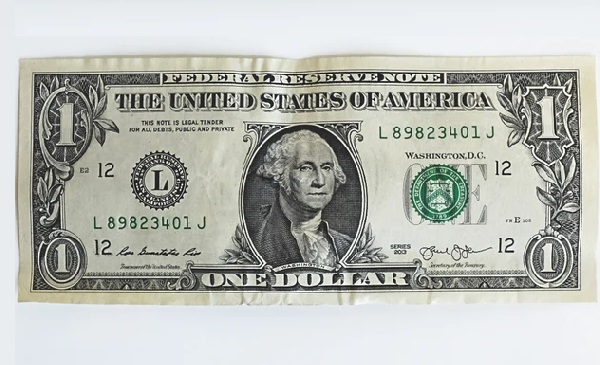
It is usually less expensive to take and pay for AZ defensive driving course, not have any points added to your driving record and avoid having your insurance rates up than to pay your ticket, have points added to your record and have your auto rates increase dramatically.
Eligibility and More

Arizona allows residents to enroll in traffic school once every 12 months. When you take the course, it will only dismiss one traffic related offense. Be sure to look up fines and points for all violations (if you received more than one) before you tell the Traffic School which offense you want the school to dismiss.
Top violations:
Speeding: 3 points
Running a red light or stop sign: 4 points
Failure to yield: 4 points
Criminal Speeding
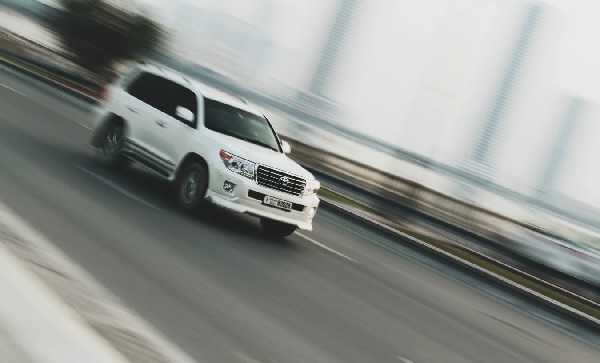
Speeding at an excessive rate, known as “criminal speeding”, can result in upwards of 30 days in jail and a $500 fine. Additional penalties for criminal speeding include paying to have the vehicle retrieved from the space it was towed to. Criminal speeding occurs when a driver goes 85 miles per hour or more anywhere in Arizona. A driver exceeding 35 miles per hour near a school crossing can also be found guilty of criminal speeding.
A driver who exceeds the posted speed limit by 20 miles per hour in a residential or business area can also be found guilty of criminal driving. If no speed is posted in a residential or business area, one driving 45 miles per hour or more beyond the speed limit will face the possibility of a criminal speeding charge. Aside from fines and possible jail time, such a charge can also impact one’s ability to legally operate a motor vehicle.
What is a Space Cushion?
A space cushion. This is something they tell you about in defensive driving class. What is a space cushion? It sounds top secret. Like something, NASA and the government need to keep hidden in order to protect us from beings from outer space. That’s right. Space beings. Aliens. Martians from a distant planet, maybe Mars, who have entered our atmosphere and are looking for a way to relax. After all, space travel must be exhausting. Imagine sitting there, in your UFO spacecraft seat, for millions of miles. Completely tiring. No wonder those men from Mars need a space cushion. A place to lay down their big brainy heads for a little cat nap.
No, sorry, that’s not what a space cushion is. Although, that is a novel idea. So, what exactly is a space cushion?
What is a Space Cushion?
A space cushion is an area around your vehicle that is just empty space. No other vehicles are in that space. The space cushion area includes the space in front of, behind, and on both sides of your car.
Why Have a Space Cushion?
A space cushion gives you time and opportunity to avoid collision with another vehicle. If you don’t have a space cushion, then any sudden movements by other vehicles can catch you with no way out of the situation. In fact, with no space cushion around your vehicle, you have limited options if you yourself have a sudden emergency or a sudden movement. Consider this: Imagine you’re driving in your car, and one of your tires blows. The sudden drop in tire pressure will likely cause your vehicle to swerve dramatically to one side. You obviously won’t know which side your car will swerve on, because it came out of the blue. You could swerve right into another car, or even a pedestrian. This is why you want to have a space cushion.
How to Make a Space Cushion
First, you don’t need sewing lessons to make a space cushion. We thought we cleared up all that nonsense about aliens needing naps about two paragraphs ago. So please put away the needle and thread. And the thimble. Okay, let’s get down to the business of defensive driving by making a space cushion.
First, you want to have at least a three-second delay from the rear end of the vehicle in front of you to the front of your car. This is the easiest part of the space cushion to make. As you’re driving, pay attention to the signs on the side of the road. If you’re on the freeway, you can use the signs overhead. As the car in front passes by the sign, count to three (yes, you can use Mississippi). Your car shouldn’t pass that same sign before you’ve reached three. If it has, you’re following too closely. Slow down, Speed Racer.
Second, you want the car behind you to slow down so there’s a three-second delay between you. Now, you can’t tell that driver how to drive. But you can let that driver pass if he insists on tailgating you, (maybe he has to get to a bathroom or something. Who knows)? Anyway, just let him go by.
Finally, you don’t want any cars next to you. How do you manage this? By adjusting your speed either up or down so that you aren’t riding along with James Dean’s style in some kind of misconceived road race on the highway.
Now that you know what a space cushion in, why it’s necessary, and how to make one, you’d best be on your way. Leave plenty of time between your departure and your arrival so you’re never the one tailgating.
Answering common traffic school questions
Are you enrolled in traffic school and feeling a bit nervous about the expectations? If so, you are not alone. Most people experience some degree of anxiety. It is quite normal.
However, you should calm down. The goal of traffic school is to make you a safer driver. The curriculum is not set up for you to fail. Instead, quite the opposite is true. The institution wants you to comprehend the material as fully as possible. Your success is their success.
This all sounds well and good, but you also know that in the end you have to complete a certain amount of work with a passing score. Keep reading below to find out just where to turn for answers to your traffic school assignments.

Use this information to help get a passing score. Then, enjoy the safe driver record and dismissal of tickets. And, of course, do not forget the mandatory insurance discount.
I’m struggling with my online traffic school course, what should I do?
You would be surprised at how easy things can be when you use a little common sense. Just stop trying to make traffic school so difficult and all will be smooth sailing.
When things get tough, just sit back and relax. You have been a driver for some time now. The answer is probably the one that seems right to you. Use your intuition.
For example, the rules of the road exist to protect motorists and pedestrians. You already know this. So, use this knowledge to help you figure out the answers to your traffic school questions. If a choice does not help keep people safe on the road, then you can discard it.
Can I ask friends & family for help with my online traffic school?
The people around you, such as family and friends, are excellent sources of information on traffic laws. Many of them have been driving for decades and know all the rules in your state. Be sure to ask them for help when trying to complete your course.
It may be best to rely on more than one person for the answers. You will want a variety of opinions. Listen to what everyone has to say, check your course material again and then choose the best answer.
How can I use the internet as a source for answers with my traffic school online?
You should search the internet for relevant driving websites. Your state motor vehicle department will have the current rules of the road available online. Likewise, the state insurance department can provide you with information on auto insurance requirements.
Last, the state court website can explain what will happen if you break the laws while behind the wheel.
What about the instructor of the online traffic school course, can I ask them for help?
If truly stuck with nowhere to turn, then ask your instructor for help. Now, you should always be sure to have attempted to find the answer yourself first. Quite often, wayward students will skip the reading material or fail to follow instructions and then expect the instructor to bail them out.
Truly attempt the assignment before asking for the instructor to explain it to you. Doing so will make their explanation that much more comprehensible.
Traffic school success is right around the corner!
You are now prepared to complete your traffic school with flying colors. Just take things easy and you will succeed in becoming an acknowledged safe driver in your state.
Traffic School Daze vs. Real Traffic School
If you saw the Jamie Foxx Show, Season 2, Episode 10, when he goes to traffic school, you might be a bit anxious about signing up. Do not worry, the show was very much an exaggeration.
Sure the episode was extremely funny, but they got things wrong. You should relax and know that your school wants you to succeed. They will not be out to fail you as was the case for Jamie and Braxton!
Following are some of the realities of traffic school. You should be thankful things are a lot different than in the show.
You Cannot Bribe the School
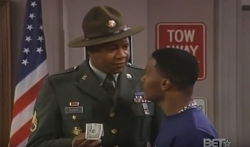
When they arrive at the traffic school. Jamie tells his co-worker Braxton that they will not have to stay the entire time. He had heard from reliable sources that it is possible to pay off the school. In return, the instructor will claim the student completed the course, and the traffic infraction would be dismissed.
You better not attempt to bribe a traffic school official. They will not take the offer lightly. You may find yourself turned in to the authorities. Moreover, the state may decide to leave your traffic record as is.
In fact, the authorities may even add another violation to your record because of your unethical behavior.
The Instructor is not a DI
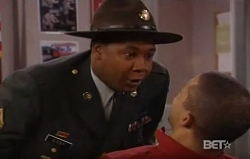
The instructor in this episode is a real character for sure. He obviously has watched a few too many military boot camp films. The students are told to address him as “sir!” He yells and threatens them regardless of what they do. It is the form of intimidation you expect of a drill instructor or prison guard.
Well, you can relax. Nobody will yell at you in a traffic school classroom. The instructors are there to help you pass. They will not treat you like a prison inmate.
And, if you are still a bit concerned that maybe you will get that one rogue instructor from the Jamie Foxx Show, then you can always take your class online. This means you will complete the course from the safety of your home. Nobody can yell at you via the computer screen.
You Can Ask Questions Freely
The traffic school succeeds when you succeed. They want you to be a safer driver. Thus, unlike the instructor in the show, the traffic school staff will answer your questions without personal attacks.
Nor will they get into your face in order to intimidate you. Fear is not a tactic used in the real traffic school classroom. Instead, expect to find compassionate instructors who enjoy their jobs.
No Ten-Hour Mandatory Sessions
Jamie and Braxton “belong” to the instructor for the next ten hours according to the show. Now, that is pure torture.
You will not have to endure such a long duration of traffic school at one time, unless that is your choice. Just sign up for the online version. You can start and complete sessions at your convenience. Too bad Jamie did not think of that?
No Pushups
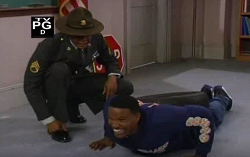
Jamie had to do over 1000 pushups as punishment for his behavior.
Fortunately, you will never be told to perform any physical activity whatsoever. Just listen to the instructor, study your course material and it will be smooth sailing.
Nobody Goes Home Broken
Repeatedly throughout the show, the instructor tells Jamie and Braxton that he will eventually “break them” down. Supposedly, the students will get tired of the harassment and give up. For some reason that would be a plus to the television instructor.
In real traffic school, the instructors want you to enjoy all the benefits of course completion. Then, you will go on to tell others to attend the school.
They want to “make you” not “break you.”
What is a Sig Alert and How to Plan Travel Around It?
It has happened to every Southern California (SoCal) driver at one time or another. You wake up in the morning or get off from a long day at work. All you can think about is getting where you need to go. Perhaps you are even running a bit behind schedule.
Then, the worst possible thing occurs. There is a Sig Alert on the route you are taking! Too late now. You could be stuck for hours in some of the worst traffic in the nation.
Read on to find out how you can avoid this unfortunate fate by learning just what a Sig Alert is and how you can plan your route around one.
What is a Sig Alert?
Sig Alerts are traffic warnings that the authorities issue when they expect a major backup on the roads. They declare a Sig Alert situation when an incident causes two lanes or more to be unavailable for at least two hours.
Despite most SoCal freeways having multiple lanes, these debilitating Sig Alert incidents usually result in serious traffic jams. The first problem is the closed lanes. Vehicles must merge into other lanes, which stalls the flow of traffic. Second is rubbernecking. People always slow down to stare at an accident. The cumulative effect of just a few seconds of staring results in even further congestion.
History of the Sig Alert
The Sig Alert originated in the 1940s. Traffic was becoming worse as more Southern Californians began purchasing cars. Jobs in the burgeoning defense industry had put money into the pockets of many who before did not have disposable income.
Local police would notify Loyd Sigmon, a popular Los Angeles radio reporter, of bad accidents. He would then inform the public on his show. Eventually, the broadcasts became widely known as “Sig-Alerts.” The police then began sending the alerts via electronic devices to Sigmon and other journalists.
Today, the California Highway Patrol (CHP) issues these warnings to both the media and public via a vast array of communication networks.
How to Avoid Traffic Congestion
Always check for ongoing Sig Alerts before leaving your home or workplace. Furthermore, keep checking while on the road. Quite often, you can make a hasty detour before getting into the proximity of a Sig Alert zone.
Where to Get Information
You are very fortunate that in this age of fast communication, the authorities have many ways to broadcast Sig Alerts. In the past, motorists had to be listening to the Loyd Sigmon Show to know what was going on.
These days, to find out about alerts, you can watch the television news. All SoCal news shows have routine traffic reports during the morning and afternoon rush hours. These stations also have websites that update as road conditions change.
The California Highway Patrol posts Sig Alerts on its website as well. If you are driving, look for warnings on the electronic message boards above the highways.
Also, local radio stations still announce Sig Alerts to keep listening to audiences informed.
Last, but certainly not least, you can download a Sig Alert notification program for your mobile device.
Avoid an Accident
The only thing worse than being trapped on a highway in Sig Alert-related traffic is being the source of the alert itself.
You can lessen your chances of causing an accident by attending traffic school. Be sure that the course is recognized by the state. You may even be able to receive a dismissal of any outstanding traffic tickets.














 Live Chat
Live Chat



